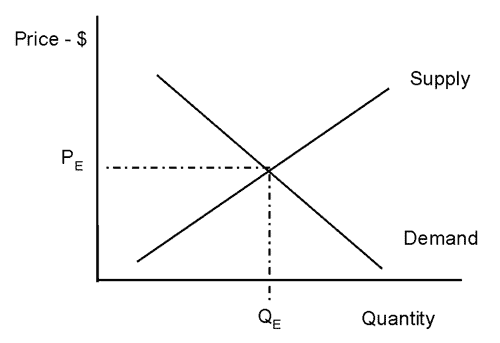The Great Divide in the Democratic Party on Economic Policy
The following commentary was delivered by Michael Meeropol over WAMC radio in December of 2006
When it comes to economic policy issues, there are two separate and antagonistic wings to the Democratic Party. One is associated with the policies of the Clinton Administration while the other is represented most strongly by Senator-elect Sherrod Brown of
As I see it, the
Looking at
However, NAFTA-style globalization, the repeal of the federal guarantee of a cash benefit to children living in poverty, and the single-minded commitment to budget balance were the major enterprises of that administration.[6]
Even the best anti-poverty program of the
I have said it several times in my commentaries and I’ll say it again here. The best way to fight poverty and improve general prosperity is for wages to rise. The best way to fight against the polarization of incomes in the population is for workers to form unions and push for those higher wages.
But in the words of economist Robert Pollin, “[T]he Clinton Administration did almost nothing to advance the interests of organized labor or working people more generally.”
As a result “… union membership continued its long decline during the
Opposition to Clintonomics was showcased this past Sunday in the New York Times by Lou Uchitelle’s, article “Here Come the Economic Populists.” He specifically identified Senator-elect Brown as a member of the new group. [8]
These populists argue that the trade agreements beginning with NAFTA and continuing through the various World Trade Organization negotiations have failed to protect workers’ rights to organize unions and thus raise wages in the low-wage countries. Instead, wages in high wage countries have continued to stagnate or drift downwards in real purchasing power. They also insist not only on an increase in the minimum wage but on tying it to the cost of living so that future inflation will not erode its real value.
For the minimum wage to have the same purchasing power it had in 1968, it would have to be $7.71 today.[9] Raising it to $7.25 immediately is the most just thing to do. I believe it is unacceptable to compromise with Republicans and so-called pro-business democrats by delaying implementation till 2009. (By the way, why is it “pro-business” to impoverish the average worker? Who is going to buy anything if wages keep stagnating? A business which pays its workers very little and has no customers is guaranteed to go out of business soon!)
Let’s watch closely while these populists and Clintonites duke it out for the soul of the Democratic Party.
[1] In addition to Senator-elect Brown, others who have been mentioned are Senator-elect Jon Tester of
[2] There is an excellent book that develops this point quite clearly, It is Contours of Descent by
[3] For
[4] For a discussion of
[5] See Pollin, p. 43.
[6] There is a tremendous literature around NAFTA and the WTO. For a good critique of the arguments as to how wonderful NAFTA is because it opens markets to competition, see Meherene Larudee, “Integration and Income Distribution under the North American Free Trade Agreement: The Experience in Mexico,” in Dean Baker, Gerald Epstein and Robert Pollin (eds.) Globalization and Progressive Economic Policy, (Cambridge: Cambridge University Press, 1998). For a generalized critique see Joseph Stiglitz Globalization and its Discontents. The repeal of the federal guarantee for children of single parents in poverty has been touted as a great success – so-called “welfare reform.” For a brief discussion, see Surrender: 247-249. The law is mis-named the Personal Responsibility and Work Opportunity Act of 1996. What it does is replace the old AFDC program with a new one, Temporary Assistance to Needy Families (TANF) with a nominally fixed federal grant to states at the level of spending in 1995. The states basically had carte blanche to create their own new programs within the following constraints: No family may receive more than five years of these benefits in a lifetime and for no more than two years in a row. Adults receiving cash assistance must be involved in a work program, an education program (but only up to achieving a high school GED) or an active job search. The law has been considered a great success because the percentage of the population receiving TANF fell dramatically from the percentages receiving the old AFDC program in the early 1990s and many of the people leaving the welfare rolls ended up getting jobs. In my personal opinion the main impact of the creation of TANF was to transform many women who received welfare and took care of their children at home into working single parents who were still poor. The disaster some of us feared did not occur because there was tremendous job growth and thus reduction of poverty in the period from 1996 to 2000. However, the percentage of people who left the rolls was much higher than the percentage of people who raised themselves out of poverty. In other words, many people who left welfare became quite destitute. In the period since 2000 when the percentage of the population in poverty has risen and when some families have reached their five year lifetime limit, I think the impact will begin to be quite negative. For a fascinating journalistic account of the situation since TANF was introduced see Jason DeParle, American Dream: Three Women, Ten Kids, and a Nation's Drive to End Welfare. (NY: Viking Penguin, 2004). For a discussion of budget balance, see Pollin: 68-75, and Surrender: 249-264.
[7] Pollin: 24-5. In 1973, 24% of the workforce was organized into unions. See http://www.trinity.edu/bhirsch/unionstats/.
[8] New York Times, November 26, 2006.
[9] The Economic Policy Institute (www.epinet.org) maintains a data base showing the real purchasing power of the minimum wage going way back to its origins.


0 Comments:
Post a Comment
<< Home